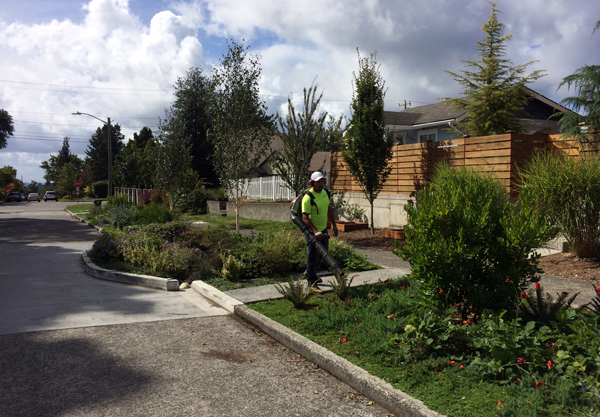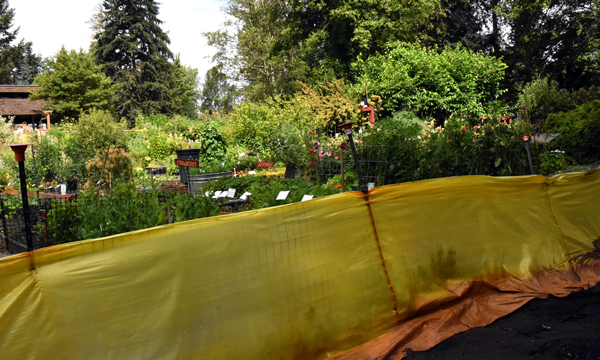Examples of our work
We work in a variety of areas, from urban parks to shorelines to wetlands.
When sewer construction projects disturb a landscape, Mitigation and Monitoring (M/M) Program planners and crews are there to make sure the site fully recovers afterward. We work in a variety of areas, from urban parks to shorelines to wetlands, using the latest science and innovation to keep our restoration sites on a path to success.
Urban landscapes
Construction may involve parks, roadsides, and developed beach areas.
Example:

King County installed roadside rain gardens as part of the Barton CSO Control Project to capture and clean stormwater that would otherwise go into the sewer system. During heavy rains, this stormwater can fill pipes and cause overflows into Puget Sound at permitted discharge points. The rain gardens were installed to help prevent those combined sewer overflows, or CSOs.
The M/M team oversees the maintenance of the Barton roadside raingardens to ensure they are properly functioning and capturing polluted stormwater runoff from streets, sidewalks and other impervious surfaces.
Public access areas
If a project must go through wetlands, parks, or natural areas, the M/M Program ensures that paths, trails, and other recreational amenities are not impacted by aggressive or invasive vegetation along pathways to ensure public access is maintained.
Example:

A sewer lining project in the Lake Hills Greenbelt required work by a community garden and wetland area. Once restored, the M/M team will take over monitoring and maintenance of the restored wetland area.

 Translate
Translate